Broiler chickens, also known as meat chickens, are a type of poultry that are raised for their meat. They are often reared commercially in large numbers.
Broiler farming is a very intensive process, and it is important to ensure that the birds are well cared for in order to produce healthy meat. Raising broilers can be a fun and rewarding experience, especially if you have the right information to get started.
In this beginner’s guide to broiler farming, we will cover everything from selecting the right breed of bird to setting up your brooder and raising healthy broiler chicks. We’ll also discuss important topics like feed and feeding, vaccination schedules, and common diseases of broiler chickens. By following these simple steps, you can ensure a successful journey from start to finish with your broiler flock. There is also a link to a Raising Broilers from Start to Finish PDF ebook.
Also Read: A Beginner’s Guide to Layer Farming
Some Facts about Broiler Chickens
Some of the facts about broilers include:
- Broiler is another name given to a poultry species that provide meat that is suitable for broiling.
- Broilers have a rapid growth rate and they attain marketable or consumable size within 5 weeks.
- Broiler chickens are easy to raise and manage both on a small, medium and large scale.
- Broilers convert feed better and faster than any other type of chickens or poultry.
- Broilers are not rugged or hardy birds; hence they need an optimal form of care and management which includes prompt vaccination and medication, adequate ventilation and high-quality feed.
- Broilers go through a three-phase feeding program or regime which are broiler starter, broiler grower and broiler finisher.
- Their meat is juicier and tastier than other poultry meat.
- They can be raised organically and synthetically but the former is costlier but healthier.
- They don’t do well on free-range but under an intensive system of management. They can be raised either in cages or deep litter floors.
- They live longer when raised on free range than when they are completely kept in a pen.
- Broilers can lay eggs just like every other bird and they can also mate with roosters of other chicken breeds.
- We have different strains of broiler (some call it breeds). We have the Ross, Cobb, Arbor Acres, Hubbard and Marshall broiler strains.
Broiler Production Programs
There are two broiler production programs that can be used for raising broilers or broiler chicken farming. These are:
- Occasional broiler production program; for special events such as Christmas, Easter, and Salah festivals or some other demands like weddings, anniversary celebrations, birthdays, thanksgiving, etc.
- Regular broiler production programs; which are; All-in, All-out systems; and multiple production systems.
What you need to get started in raising broilers
When it comes to broiler chicken farming, there are a few things you need to know in order to get started. You will need the following:
- Brooding house or brooding cage
- Rearing pen or cage
- Electric, gas or charcoal brooder (source of heat)
- Feeders (tray and cone feeders)
- Drinkers (nipple, fountain or bell drinkers)
- Brooder guard
- Lamps
- Wood shavings
- Water tanks or drums
- Buckets and bowls
- Feeds
- Spade
- Brooms, knives and scissors
- Vaccines and medicines
- Weighing scales (digital or analog)
- Knapsack sprayer
- Ropes and binding wires
- Pliers or pinches
- Good source of water
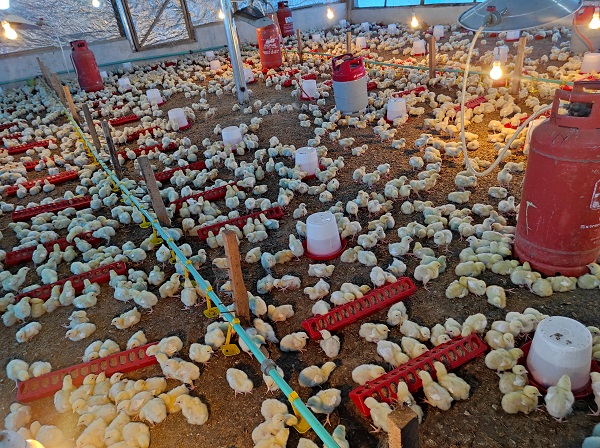
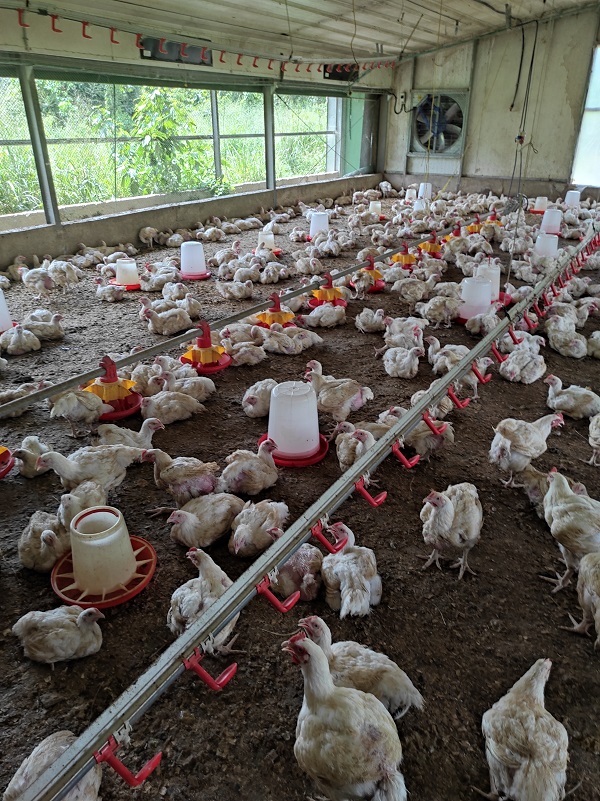
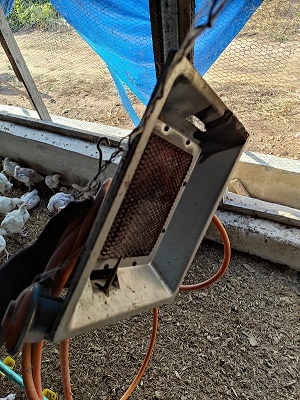
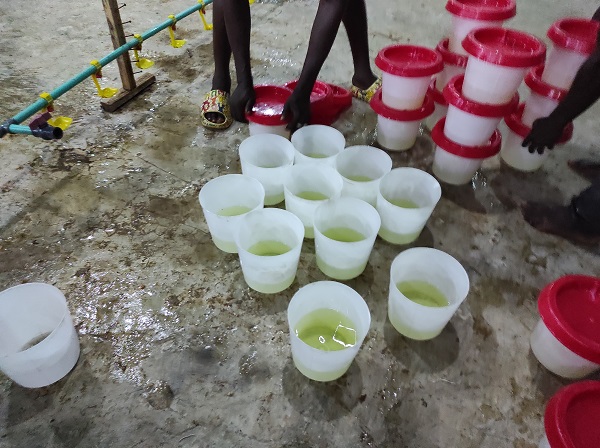
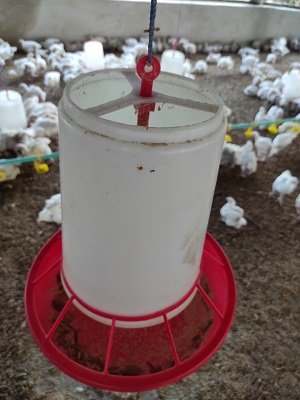
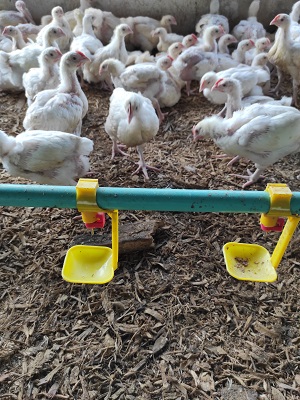
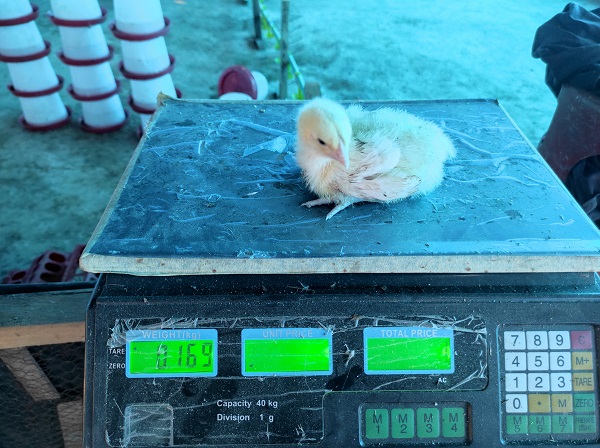
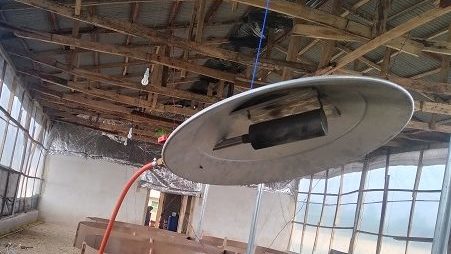
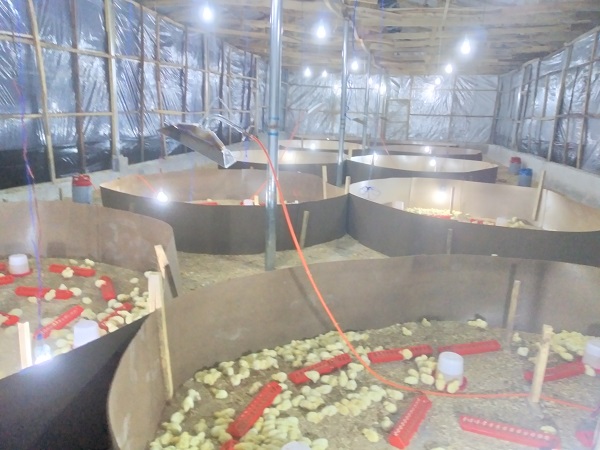
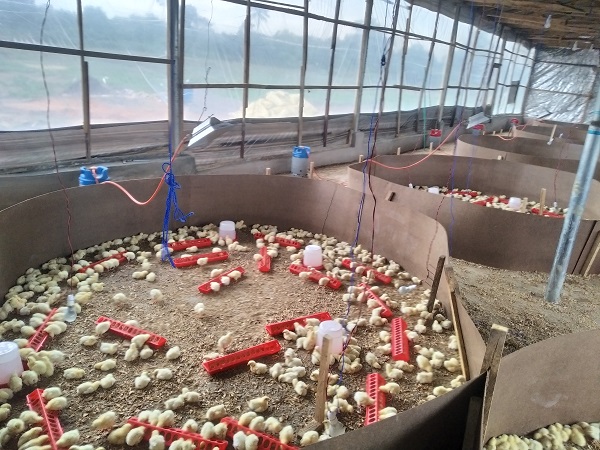
How to Find and Select the Right Broiler Chicks
Chicks are younglings of chickens. The quality of broiler chicks you purchase directly affects their growth and feed conversion rates. Therefore, if you start your broiler farming journey with low-quality chicks, you shouldn’t expect anything positive in the end.
Chick quality is a crucial factor for the success of your broiler farm. Chick quality can be determined by factors that include the origin and location of parent stocks and hatcheries, the farming environment, etc. Parent stocks are important because high-quality parent stocks produce high-quality chicks. The production environment is also an important factor in chick quality because it affects performance.
When it comes to getting chicks, you need to choose wisely. Hatcheries are easy to deal with; they offer a wide range of choices and they have good customer service. But there is no guarantee that the chicks you buy will be of good quality.
You can source high-quality day-old chicks (DOC) from reputable hatcheries and marketers and vendors, but you need to be careful if you go the latter route. There are a lot of shady dealers out there who will try to pass off unhealthy or low-performance broiler chicks as high-quality ones in an attempt to make more money.
If you buy chicks from reputable hatcheries, your stock will perform well—and the better it performs, the more money you make. But if you buy chicks from dodgy hatcheries, your chicks will perform badly and your profit will suffer.
Before booking for broiler chicks, it’s important to know what you’re looking for and do your research ahead of time. Make sure to ask the right questions before you buy — and don’t get roped in by limited offers, as they’re likely to turn out to be a scam.
If you’re buying from a DOC vendor or marketer, ask for the following:
- Name of hatchery or source of parent stock
- Performance metrics
- Strain or breed
- Vaccination and medication schedule/program?
- When will the chicks be ready for collection?
- Will the chicks be vaccinated by the hatchery when they are hatched?
What is the best hatchery to buy from?
There is no best hatchery when it comes to sourcing chicks. Some farmers have this misconception that one hatchery is the best. Well, No! We only have reputable hatcheries and none of them can be classified as the best.
Why?
Issues may occur in the parent stock and the problem is passed on to the chicks and then to the farmer. If a poultry farmer starts having problems with the chicks, then such a farmer might say the hatchery is bad. However, if the hatchery discovers that there is an issue with a particular batch of chicks, they are ready to compensate affected customers. But the deed has been done which is something they cannot control initially.
Hence, it is best to buy from hatcheries that have excellent track records as well as have their customers at heart. Apart from the physical characteristics of high-quality chicks, you should always consider the public reputation of the hatchery whenever you want to procure or place an order for chicks.
Setting Up or Building a Broiler Pen
Broiler Housing Systems
Broiler chickens can be raised in cages (battery cage system) as well as on the floor (deep-litter system). When raised in cages, more birds are raised per unit space.
Deep Litter System
Under this system, the floor of a deep-litter pen is covered with bedding material such as wood shavings, which absorb moisture from the broiler droppings. The litter materials must be able to absorb a lot of moisture. Wood shavings, chopped hay or straw, groundnut hull or rice husks are examples of good litter materials.
Feed and water are served to the birds inside the pen while the litter is packed and replaced when they get wet, smelly or caky.
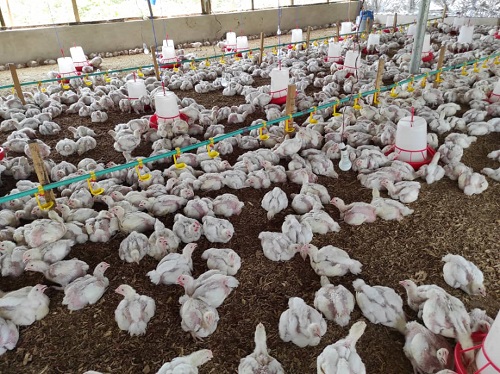
Cage System
The raising of broilers in cages is not common on a commercial level. Under this system, the broilers are raised in a wooden or metal cage. The feeders and drinkers are also placed inside the cage. Although, wood shavings or sawdust are spread under the cage to absorb the moisture from the droppings and it makes cleaning easy.
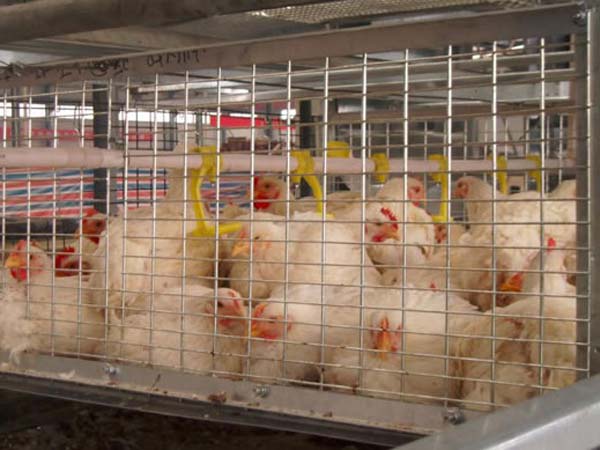
Getting Started
As mentioned earlier, broilers do well under an intensive management system. That is when they are housed in a pen or cage with restricted movement. The reason for this is not farfetched. They convert the energy meant to be used for scavenging or roaming around to flesh and fat.
A broiler house should be constructed properly. Irrespective of the size and building materials used (wood or brick), the following features must be available.
- Must be constructed in the correct location
- The roof must be watertight and non-leaky
- The floor and walls should be easy to clean and disinfect
- It should allow adequate ventilation
- Wild bird and rodent proof roof, walls and floor
Where to locate a broiler house
Before constructing a broiler chicken rearing pen, ensure the following conditions are met.
- The land must be well-drained and not water-lodged. This is vital especially if you plan to raise broilers on the deep-litter floor system.
- If possible, the house or pen should be sited far from other poultry houses or farms to minimize the spread or transmission of diseases.
- The building should be in the east-west direction to avoid direct sunshine into the rearing pen.
- The house should be well lighted and allow natural sunlight during the day.
- There should be shades around the house such as tall trees if it is in a hot area. The tall trees however should not hinder natural airflow.
- Fence the broiler farm or unit to reduce human traffic which will reduce the incidence of disease outbreaks and bird theft.
How to build a broiler chicken pen
- When building a broiler pen or cage, ensure that the materials used are of good quality, durable and easy to repair when damaged. This is because the house is meant to last for a long time.
- The width (wideness) of the pen house should not be more than 10 meters (33 feet) for sufficient natural ventilation. The number of broilers to be kept in the pen would determine the length (longness) of the pen. The height of the pen shouldn’t be less than 2 meters.
- The floor of the pen must be concreted as it makes the floor easy to clean.
- If you are in the hot and temperate region, ensure that at least 3 sides of the pen side walls are opened but covered with wire nets so as to allow adequate air to flow easily into the pen. These opened sides can be temporarily and partially covered with tarpaulin during brooding or when you have chicks inside the pen.
- The roof should extend the walls of the pen by 0.5-1 meters. You can slope or ridge the roof. For a ridged roof, the ridge should be open to allow the natural escape of heat due to the chimney or stack effect.
- You should include a cloakroom or changing room, feed store and there should be a foot dip at the entrance to the area where the chickens are kept.
Broiler Chicken Management
Brooding Broiler Chicks as a Beginner
What is brooding?
Brooding is the act of caring for broiler chicks from one day old to 2 weeks of age. This includes the provision of heat, feed, water, vaccination, medication and other necessary care during their early growing period.
Chicks are just like babies that need maximum care from the mother. However, in the case of chicks, there is no mother and it is the responsibility of their raiser to provide all the support and needs the chicks required.
Broiler chicks can’t regulate their body temperature themselves, they don’t have feathers to protect them from cold and their mother is not there to keep them warm. This is why it is important to provide artificial heaters for them. The artificial heaters can be charcoal stoves, kerosene stoves, gas brooders, electric brooders and incandescent light bulbs.
Apart from providing heat to the chicks during brooding, feed and water must be provided too. These are very important for the survival and quick growth of the chicks. Hence, you will need adequate numbers of feeding trays or flip-top feeders as well as baby drinkers.
The recommended temperatures for broiler chicks are:
- Day 1 – 34oC or 93oF
- Day 2 – 32oC or 90oF
- Day 7 – 31oC or 88oF
- Day 14 – 27oC or 81oF
When it’s one week to the arrival of the chicks, the following should be done or put in place.
- Clean and disinfect the pen thoroughly with good disinfectants like Morigard, Polidine or V-OX. The floor and walls should not the focus. The production equipment which includes the brooder or heater, feeders and drinkers should not be left out.
- Re-install the equipment after they must have been disinfected.
- After the inside of the pen has been properly cleaned and disinfected, prepare a foot dip at the entrance of the pen with the disinfectant solution inside in it. Anyone going in and out of the pen must dip their feet inside the foot dip.
- Cover up the netted walls with translucent polythene material or white tarpaulin if available. Just ensure the openings are covered to trap heat and stop draught when brooding.
- Lock the pen until the time the chicks will arrive.
When it is 24 hours to the arrival of the chicks, do the following.
- Spread the wood shavings to a minimum depth of 5cm above the floor. If you are brooding inside a cage, place newspapers or plywood on the floor of the cage.
- Light up the heaters (electric bulbs, charcoal stoves, gas brooders, etc.) and if you want to use brooder guards, set them up around the heaters. Place a digital or analog thermometer to monitor the temperature of the whole pen. The required temperature is 34oC or 93oF.
- Check that the pen is well illuminated by the bulbs and that the floor is easily seen. If there is a need to add more bulbs, do so immediately.
- Arrange the round tray feeder and drinkers based on the number of broiler chicks.
- Adjust the feeders and drinkers well so that the chicks can reach the feed and water easily.
When the chicks arrive, do the following.
- Mix mild broad-spectrum antibiotics, multivitamins and glucose in water and fill all drinkers with the solution 3 hours before the chicks arrive. Put the broiler starter mash or crumbles in all the feed trays.
- Immediately the chicks arrive, unload the boxes from the van and move the boxes into the brooding pen. Start unboxing the chicks gently but quickly unto the floor. Take a record of the number of chicks inside each box including dead and malformed chicks.
- Make sure the chicks are even spread or distributed within the brooding area. Also, ensure that they are eating the feed inside the feed trays and drinking water.
In the first 3 days of brooding broiler chicks, you must check them regularly (every 30 minutes) and also check the thermometer reading. However, the most important thing is to check the behavior and arrangement of the chicks to know if the ambient temperature is correct.
Please note:
- If the chicks are evenly distributed in the pen, it shows the temperature is correct.
- If the chicks huddle together under the heat source, it means the temperature is too low. In this case, add more heaters.
- If the chicks move far away from the heat source, it means the temperature is too high. In this case, reduce the heaters or open up a side of the wall to allow heat dissipation.
- If the chicks are arranged on one side of the pen, it means the heat is not evenly distributed. In this case, check for open walls allowing air movement from outside into the pen.
It is important to also check the water tanks and drinkers. If you are using nipple drinkers, check if the water is coming out. If you are using a fount drinker, ensure that the openings are not blocked by wood shavings.
What you should do for the first 7 days of brooding
- Administer antibiotics and multivitamins via water for 3-5 days right from day 1.
- Provide broiler starter feed and water round the clock for the chicks. However, the drinkers and feeders should be washed every day.
- Check the vitality of the chicks. If you find chicks with vent or cloaca soiled with feces, clean the area with a clean cloth soaked in warm water.
- If you use newspaper instead of flip-top feedings or feed tray, remove the newspapers after 2 days and replace them with flip-top feeders or trays.
- Remove dead chicks and bury them immediately.
- Replace the litter after 5 days.
- As the chicks grow in size and weight, gradually expand the brooder area if it is partitioned.
- Reduce the temperature gradually every day. In the hot afternoon, put off some of the heaters to avoid mortalities due to heat stress.
- Lighting must be provided round the clock to allow the chicks to eat in the evenings and nights.
- Take the average weight of the chicks every day using a digital weighing scale and kept the records.
- Keep the records of stock, mortalities, quantity of feed consumed and medication. Do this until the chickens are sold and slaughtered.
You can read this complete guide on the brooding of chicks here
Feeds and Feeding in Broiler Farming
To ensure that the broilers grow healthily, it is essential to feed them with high-quality feed. Low-quality feeds may result in not only low production but also poor health. The nutritional requirements of broilers vary with age; hence three different diets are commonly given to broilers. They are:
- Broiler starter diet
- Broiler grower diet
- Broiler finisher diet
- Broiler starter diet. This diet usually contains 21-22% crude protein and 3000 Kcal/kg energy. This is fed for the first 10 days of life. Thereafter, the broiler chicks have a commensurate additional growth response.
- Broiler grower diet. This diet usually contains 19-20% crude protein and 3050 Kcal/kg energy. This is fed after 10 days until 25 days of age.
- Broiler finisher diet. This diet usually contains 18-19% crude protein and 3100-3200 Kcal/kg energy. This is fed after 25 days of age weeks until the birds reach the market weight between 6-8 weeks.
Some broiler farmers feed the pre-starter diet, which contains more protein and antibiotics for a better start for the first 7 days.
Broilers are commonly given mash but crumbles and pellets are acceptable to them. They should be fed and given water ad libitum. The feeders should be constantly raised to the level of the back of the broilers also to prevent feed wastage.
Many producers market their broilers at 6 weeks. It has been shown that after 8 weeks, the rate of body weight gain of a broiler starts declining while feed conversion continues to increase.
I wrote a complete broiler feeding guide. Click here to read it.
Water Consumption in Broiler Farming
Water is very important to broiler chickens. When deprived of water, they die. A simple way of estimating the volume of water required by broilers is to multiply the age of the broiler in weeks by 2. The answer gives the estimated liters of water needed by 100 broilers daily that week. For instance, at 7 weeks of age, 100 broilers will drink 7 X 2 = 14 liters of water daily. Water consumption increases during hot weather.
Feeder and Drinker Requirements for Broiler Chickens
| Equipment | Quantity |
| Round baby chick feeder | 1 baby chick feeder for 30 chicks for 10 days |
| Flip-top feeder | 1 flip-top feeder for 30 chicks for 10 days |
| Adult tube feeder | 1 adult tube feeder for 30 broilers |
| 4-liter font drinker | 1 font drinker for 50 chicks |
| Adult bell drinker | 1 adult bell drinker for 60 broilers |
Broiler Health and Disease Management
How to Keep Broiler Chickens Healthy
Remember the saying, “Prevention is better than cure.” To keep your broilers healthy, there are certain important things that you must do routinely and occasionally. It is not only administering drugs now and then. Doing that will only increase your production costs. This is why it is better to do the things that will prevent your broilers from falling sick and help them grow very well.
- Ensure you observe a high level of biosecurity. This includes disallowing visitors to enter the pens anyhow and without disinfecting their footwear in the foot dip. Wild birds and rodents should be restricted from the pen area as they are potential disease carriers. Block all holes and crevices.
- Proper hygiene and sanitation should also be observed. This includes disinfection of all production pens and equipment, regular washing of the feeders and drinkers and proper disposal of poultry wastes and litter. Have an incinerator where dead birds are properly burnt and buried.
- Avoid giving contaminated or moldy feed to the birds. Ensure the feedstore is adequately ventilated and dry as wet environments accelerate feed spoilage.
- Give your birds clean and healthy water and not water from questionable sources. If you can’t drink or cook with the water, then it is not safe for your chickens to drink.
- Ensure adequate ventilation and avoid overcrowding or overstocking the pen more than the ideal capacity.
- Replace smelly, caked or wet litters with new and clean litters. If you notice the pen is starting to give an ammonic smell or it is past 5 days, it must be packed immediately.
- Physical stress weakens the immune system of chickens. Therefore, ensure you reduce the relocation, transportation and handling stresses to the minimum. Administer an anti-stress (multivitamins) after to minimize the effects of stress on the chickens.
- Vaccinate at the right time and give the necessary medications such as coccidiostat and antibiotics before diseases resurface. Ensure to adhere to the dosage and administration instructions by the manufacturers.
- If you observe a bird is sick, isolate such bird from the main flock until it recovers.
- Raise birds of the same kind, batch and age together. Don’t raise broilers, turkeys and cockerels together in the same pen.
- Always make sure there is enough water and feed for the birds and make sure water is available all the time.
Vaccination and Medication
A common challenge that poultry producers face is the prevention and treatment of diseases in their broiler flocks. Vaccination and the use of medications are two common methods used to protect bird health.
Broiler vaccinations are an important part of ensuring good health in broiler flocks. Vaccinations can protect birds from some diseases, including Marek’s disease, Newcastle disease, and infectious bursal disease. In addition to vaccines, administering medication to broilers can also help to keep them healthy. Some common medications used in broilers include antibiotics and coccidiostats.
What is Vaccination?
Vaccination is the process of protecting chickens from disease by giving them a vaccine. A vaccine is a type of medicine that contains a tiny amount of the germ that causes the disease. When the chickens get vaccinated, their body’s immune system learns how to fight the germ. If those chickens are ever exposed to the disease, their body may be able to fight it off better because of the vaccine.
Some poultry diseases are incurable and the only solution is to prevent them by vaccinating the chickens from such dreadful diseases. Each class of birds has its own unique vaccination program or schedule. For broilers, the suggested vaccination schedule is:
- Day 7:1st Lasota or Newcastle disease vaccine
- Day 12: 1st Gumboro or Infectious Bursal disease (IBD) vaccine
- Day 18: 2nd Gumboro or Infectious Bursal disease (IBD) vaccine
- Day 28: 2nd Lasota vaccine
What is Medication?
Medication in poultry is a broad term that can refer to a variety of different treatments or interventions. It can include antibiotics, vaccines, and other medications used to prevent or treat diseases in poultry. The medication schedule of broilers is as follows.
- Day 1-3: Antibiotics (Ciprofloxacin) + Multivitamins
- Day 5-6: Coccidiostats (Aprolium or sulphonamides)
- Day 7: Multivitamins
- Day 42-43: Dewormer
- Give multivitamins after each vaccination and drug administration.
Diseases of Broilers
Among the diseases of broilers are:
Bacterial Diseases
- Chronic Respiratory Disease (CRD)
- Colibacillosis
- Fowl cholera
- Fowl typhoid
- Infectious coryza
- Mycoplasmosis
- Necrotic and ulcerative enteritis
- Salmonellosis
Virus Diseases
- Avian Influenza (Bird flu)
- Infectious bronchitis
- Infectious Bursal Disease (Gumboro disease)
- Lymphoid leucosis
- Marek’s disease
- Newcastle disease
Fungal Diseases
- Aspergillosis
- Moniliasis
- Mycotoxicosis
Parasitic Diseases
- Ascaridiosis
- Coccidiosis
- Heterakidosis
- Histomonosis
- Knemidokoptosis
- Raillietiniasis
- Trichomoniasis
Marketing of Broiler Chickens
Broiler chickens are chickens that are bred and raised for meat production. They are usually sold to consumers in grocery stores or restaurants. There are a few ways to market broiler chickens. One way is to sell them to restaurants or grocery stores. Another way is to slaughter and process them and then sell the meat to consumers.
The advantage of selling broiler chickens to restaurants or grocery stores is that you can get a higher price for them. The disadvantage is that it can be more difficult to find buyers, and you may have to wait until the end of the season to sell all of your chickens.
FAQs about Broilers and Broiler Chicken Farming
These are some of the Frequently Asked Questions (FAQs) about broilers and broiler farming/production.
1. How many bags of feed for 100 broilers? How many bags of feed for 100 broilers for 6 weeks?
A broiler would consume an average of 4.25 kg from day old to the end of the 6th week. So, 100 broilers would consume (4.25 X 100) = 425 kg or 17 bags of feed for 6 weeks. A bag is assumed to contain 25kg of feed.
2. How many bags of feed for 50 broilers in a month?
You should expect 50 broiler chickens to eat 130kg of feed in one month. 130kg is 25kg if one bag is assumed to contain 25k of feed.
3. How many feeders for 50, 100 and 200 broilers?
50 broiler chicks need 2 chick tray feeders while 100 adult broilers need 2 tube feeders. 100 broiler chicks need 3 chick tray feeders while 100 adult broilers need 3 tube feeders. For 200 broilers, 6 tray feeders and 6 tube feeders.
4. How many drinkers for 100 broilers?
100 broiler chicks need 2 fount drinkers while 100 adult broilers need 2 bell drinkers.
5. How long does it take a broiler to reach market weight?
A broiler can reach maturity as early as 6 weeks. Though, this is a factor of feeding, management, and pedigree.
6. What is the average weight of a mature broiler?
A mature broiler should have an average weight of 2.2 kg at the 6th week of age
7. How many days should day-old broiler chicks be brooded?
This depends on the current season or weather. However, brooding broilers should not exceed two weeks. After 2 weeks, withdraw any source of heat or warmth and you may remove the polyethylene material used in covering the openings. The principle is whenever the young chicks have developed enough feathers to cover their body, it is unnecessary to supply additional heat again. Read more about brooding broiler chicks.
8. How much would it cost to feed 100 broilers to maturity?
As of the time this post was written, it costs ₦126,000 to feed 100 broilers in Nigeria.
If you have questions on broiler farming that have not been answered, please ask them as comments and I would update this post.
Get the Ebook on Broiler Farming Here
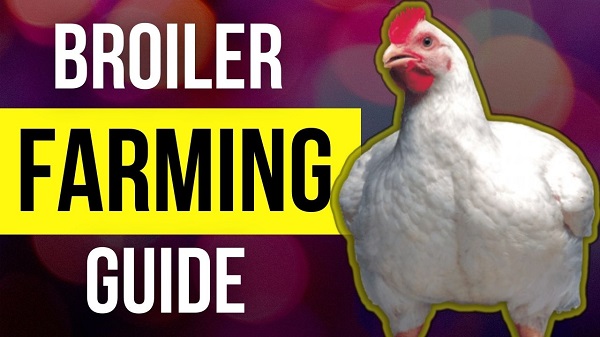
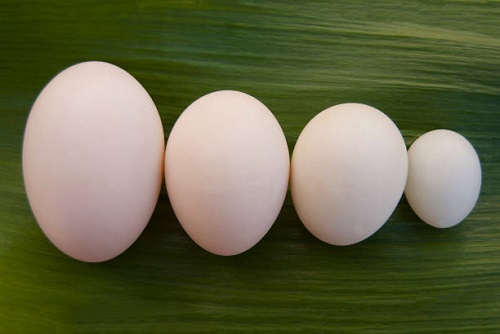
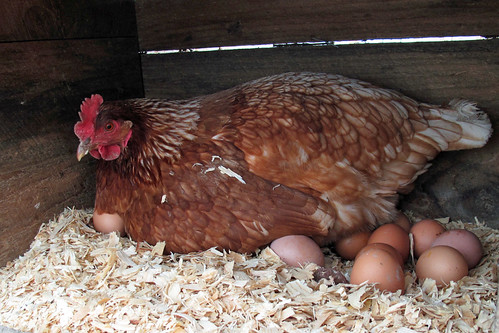
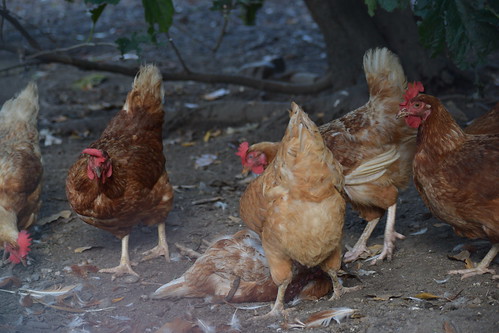
Thanks for this platform can you kindly discuss on formulation of broiler feeds
Hi. Check this post http://www.livestocking.net/diy-easily-formulate-feeds-poultry-birds
Which aspect of formulation?
Pls just kindly add me up on ur WhatsApp 08101420963
My broiler are aways sleeping what can i do
Maybe they are not feeling fine. What other signs are you seeing?
Good! We can also advertise your poultry cage business on our site at an affordable rate. You can send us an email.
Comment:please I Am An Undergratuate From Animal Science P/s Help Me With Feed Formulars(poultry)
Which of the formula?
Dear Akim, pls, i need a step by step broilers feed formula to enable me start my poultry productions
Comment:Is it advisable to rear broiler for 20 weeks before sale
It’s uneconomical to do so.
Pls how many bag of food can 100 broiler eat for 4month?
What is the ideal spacing for broiler chickens raised under deep litter system? and also when raising chickens with 24 replicates, is it advisable to put an infrared lamp in each pen during winter period to carter for warmth?
pls add me your watsapp group
Good a.m, pls add me on the WhatsApp group
Dear Mr Akin, where can I buy day old broiler in Lagos , Ibadan and Ogun State.
You can visit any chicks vendor around these places or place order for them online on Afrimash Nigeria
Pls add me to ur WhatsApp group 0906 546 0183
Thanks, good work
You’re welcome And thanks for reading!
Hello, I am a farmer in Kenya. I am requesting information regarding proper vaccination methods and how to prevent vaccine failure. Thank you.
Kindly check this link to read the article http://www.livestocking.net/how-to-vaccinate-poultry-birds
How can I buy boiler in Ilorin.
Kindly send an email to info[at]livestocking[dot]net
Pls sir should be d average weight of birds per day
Am impress by all d instruction giving Mr. Akin well done thank u for all word knowledge that u have share with us God bless u sir, I am beginner and I am highly encouraged for people like u in the biz we will get there by God grace once again thanks.
Thanks for the kind words. I will continue to give my best. Keep visiting Livestocking!
Pls am about 2 start rearing broilers. But i want 2 start by selling dem in 2wks. Is it profltable & how how many feed will i gv dem 4 dat 2wks
Profitability here is subjective and there is no harm in trying. Each bird should consume about 500 grammes of feed at the end of week 2.
Good evening, please what average kg of feed from 7 weeks to 17 weeks of Noiler Bird would consumed.
Thanks
I dont know oo
Thank you very very much Akin. God will bless you with more knowledge so serve humanity. Few questions please;
1. At what week will broiler start laying egg.
2. How many days should I deworm broiler in every 4weeks
3. How should I breed broiler for brood stock
Please how much is a carton of broiler.where can I buy from.
Can you please give me address or phone number of a Miller in Lagos.
Pls sir what is the best time to feed the birds to gain more weight.
My birds are now 6days and d weight is 100.15g per birds
Pls how much will it cost me to raise 35 broilers started from 3 weeks to maturity
I need a day old broiler
How many cartons?
My hen is not feelings fine
I’m sorry about this. What have you done so far?
Can I rear my broiler for 12 – 14 weeks and what are the possible effects especially in terms of size and meat quality compared to 8 – 10 weeks?
Yes, you can rear for 12 – 14 weeks. They will be heavier and have less tender meat. So it all depends on what your customers want.
Well done sir…. kindly add me to your WhatsApp group 09033411488.
Thanks
is it possible to feed broiler with starter feed till the slaughter/market stage
Yes, but doing so will simply increase your cost of feeding.
How can I get a feed for ilorin kwara state
Good Day Sir, Pls add me to your whatsapp group.
08143291047
Hello Admin. Thanks for the good work you’re doing.
Kindly add me up on your WhatsApp page 07033911056
Hi Adesola. We appreciate your feedback.
Am impressed with what you are doing. Please add me in your WhatsApp group: 08035860007
Thank you
I learnt so much from the write up. Please, I will like to be added to your WhatsApp group. Thanks
Sorry, we are not on WhatsApp anymore. We are now on Telegram.
Hello, I am about to take the challenge of rearing 1000 broiler birds… please what are the common mistakes most farmers make with such quantity.
Please add me to your whatsapp group.
+260973318411…. From zambia
Thanks Akin for your wonderful teachings. I also deal on feed production. I base in Nnewi.
09135307349 (sms only). 07015619297 (for calls).
I need your assistance I want to start rearing of 12broiler , I have no experience before, how many week / or days age do I need, thanks
Since you have no experience, this guide will give you a headstart even if you want to start with day old chicks.
Thank you for your good work.
I’m a beginner in the Biz for 2weeks n your write up has help me a long way.
Please add me to you telegram group : 08142978013
Click https://t.me/+muoqbz–q_8zNzZk to join
Thanks for the insight given, it’s really help. I learned new things from the write-up. More progress.
Please add me on your platform thanks.
Click https://t.me/+muoqbz–q_8zNzZk to join
I will like to be added to your whatsapp group. 09054836235
I really gained from this right up.
Thank you sir
I am new in this and don’t really know much about rearing a broiler. Reading this has really enlightened me to an extent. I am really happy I came across this. What would I have done if I did not come across your write up. I will like to know more and if possible join your group. More grace to you elbow for sharing this knowledge with us. I would say your are doing great and thanks once again. And God bless you
thanks for the post . pls what is the current cost of rearing 200broilers from the scartch asuming you have nothing except the pen. thanks
Please add me to the WhatsApp group 08023277234
Imoressive
Sir, my question goes like this, is true that detergent cannot be used in washing drinker? I was that hypo and salt is advisable instead
Detergents can be used to wash drinkers but if you want to vaccinate via drinking water, do not use any soap or detergents to wash the drinkers.